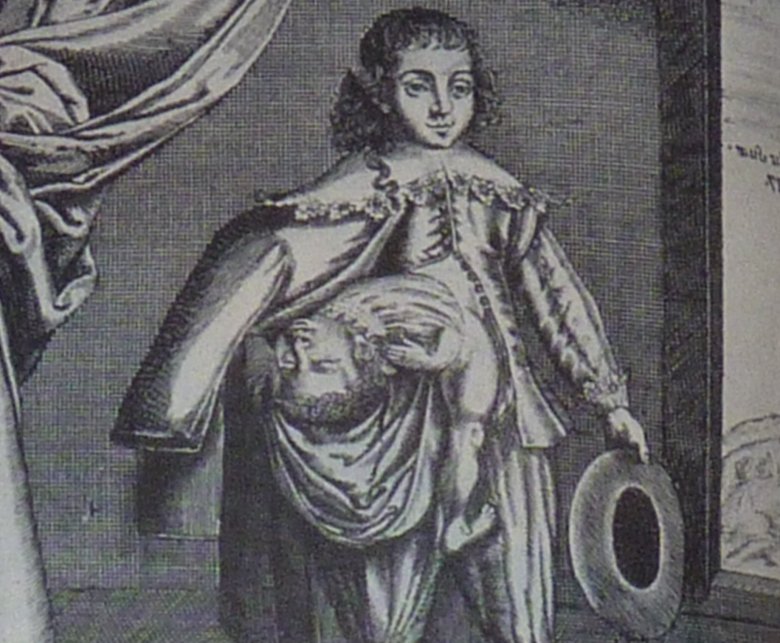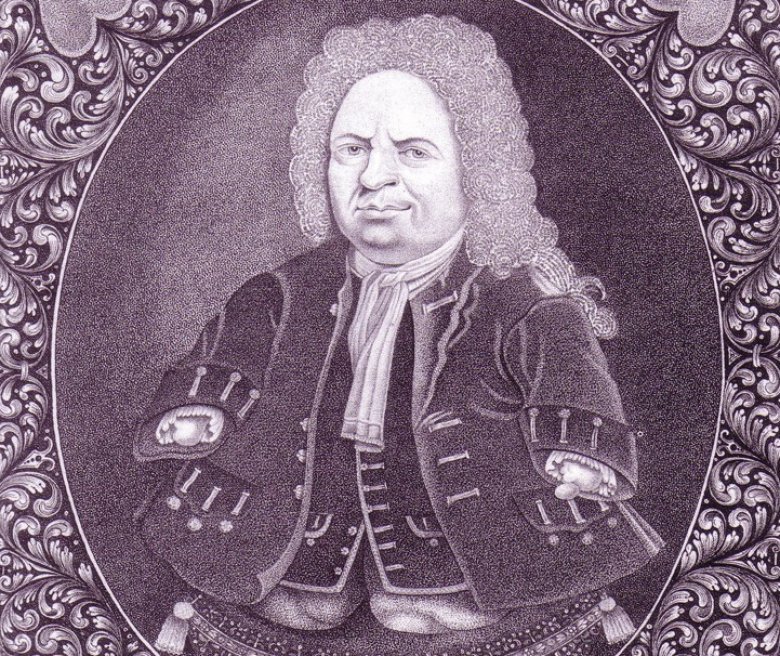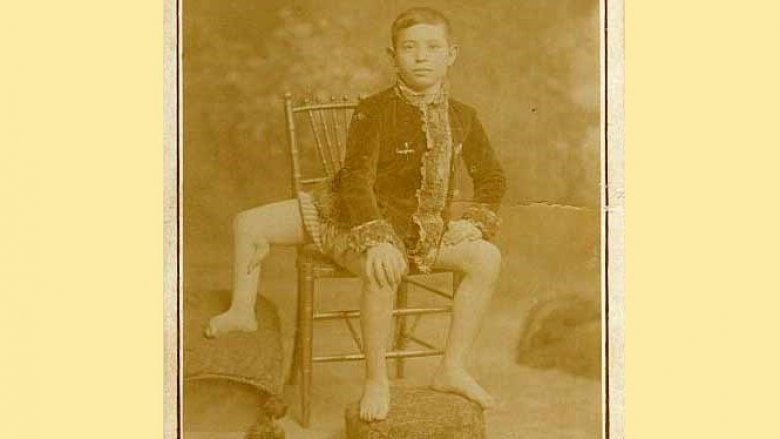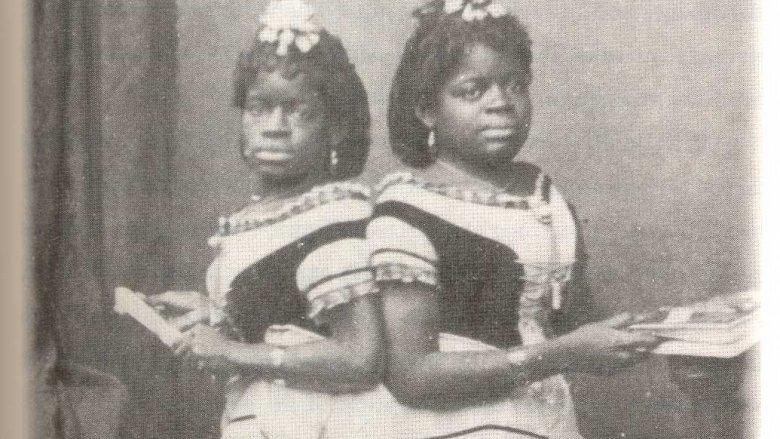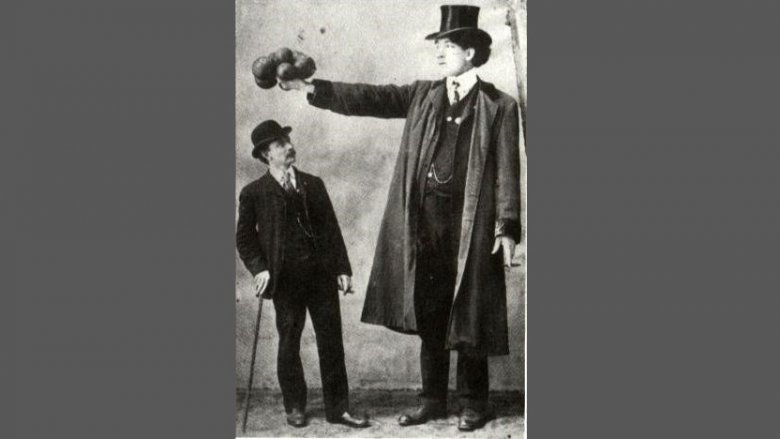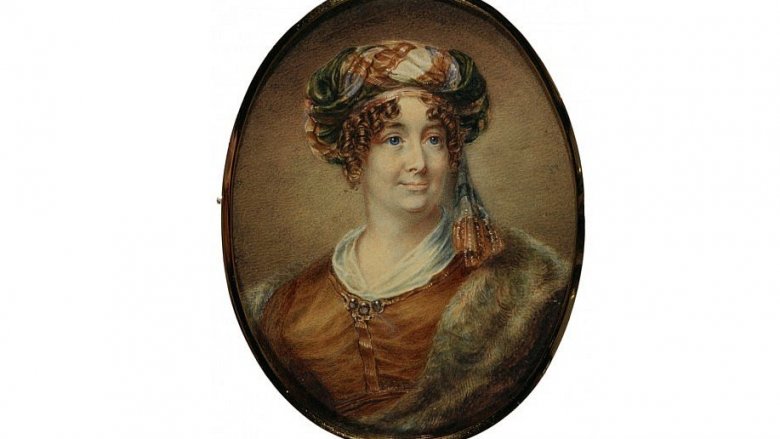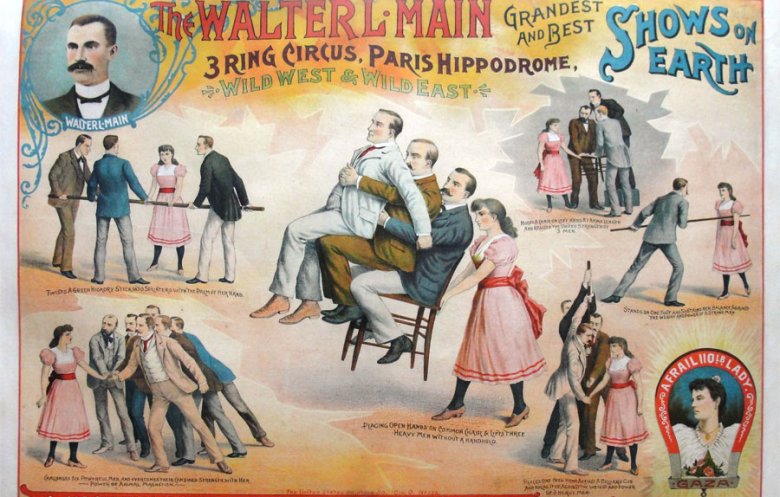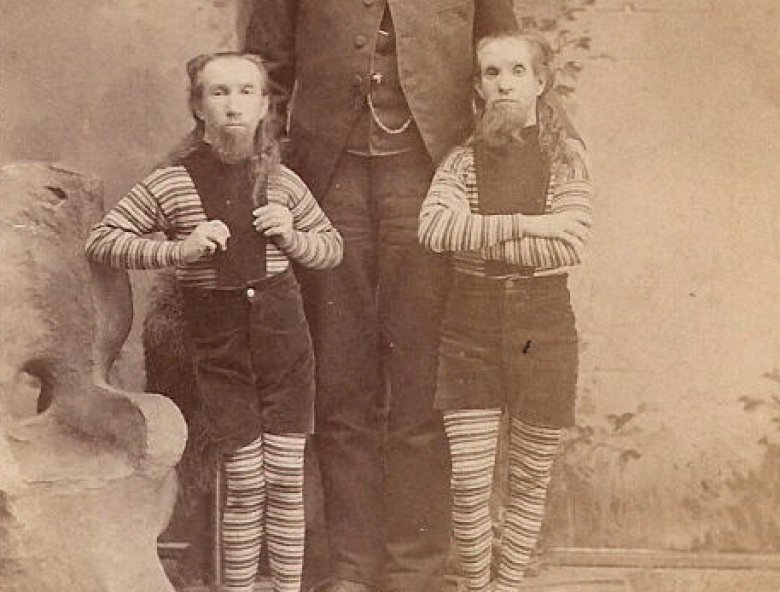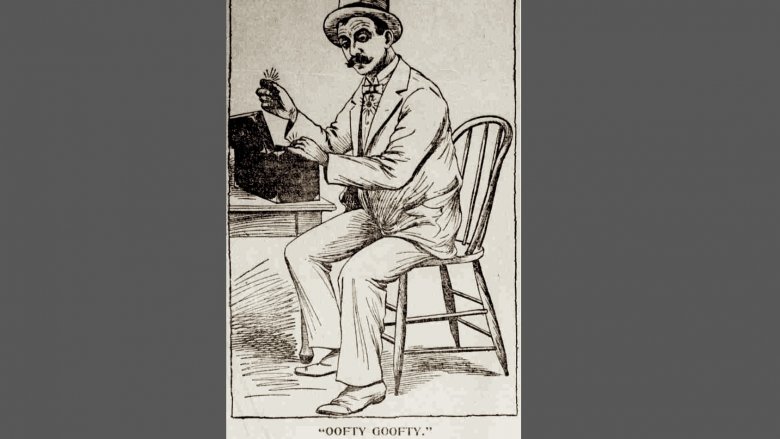The Most Bizarre Freak Show Acts Ever
We may receive a commission on purchases made from links.
It's human nature to be fascinated by someone who's even just a little different than you, and when they're really different, people tend to forget their manners completely. Freak shows and carnival sideshows have been around for a long time, and they've always been a chance for people to point, stare, and giggle a little too much. You're probably familiar with acts like the bearded ladies and the lobster boys, but let's take a look at some of the stranger acts who relied on exhibiting themselves and their deformities to make a living, for better or worse.
Lazarus and Joannes Baptista Colloredo
Lazarus and Joannes Baptista Colloredo toured Europe in the 1630s and 40s, and descriptions were so outlandish there were doubts they were real. But given the number of engravings, illustrations, and eyewitness accounts, author Jan Bondeson says they definitely did exist.
The official term for the brothers' condition is thoracopagus parasiticus — in other words, they were conjoined twins connected at the rib cage, but only Lazarus was fully formed. When he wasn't exhibiting himself and his brother, it was said he simply donned a heavy cloak and no one was the wiser that there was anything odd about him. When he received visitors, though, he pulled back the cloak to reveal the brother named for John the Baptist, which one witness described as having "a kind of lyf, and feilling" (life and feeling). Danish anatomist Thomas Bartholin described him as growing out of Lazarus' chest and having a well-formed (but strangely large) head and face, no teeth, a perpetually open mouth, and only slight breath. He also had three fingers on each hand, one leg, one foot, and two arms. He had a consciousness, too, and was often awake while Lazarus slept and responded to various stimuli.
The Colloredo brothers traveled extensively before disappearing from the public eye in 1646. They're still one of the few examples of surviving, thriving, parasitic twins in history.
Martin Laurello
Martin Laurello arrived on U.S. shores in 1921, and according to Human Marvels, he had very likely already been making the rounds of Europe for some time. He performed for some pretty big names — like Ripley's Odditorium — showing off a talent we can only accurately describe as "squicky." Billed as an anatomical wonder and given the name the Human Owl, you can probably guess he could turn his head around 180 degrees. So yeah. Squicky.
No one is really sure how he did it or what became of him. His last public appearance was in 1945, and there were rumors that he had some sense of loyalty to the Nazi party of his homeland. That's unconfirmed, but (on a much milder note) there were consistent reports that he was next to impossible to work with, so that might have had something to do with his disappearance off the freak show circuit.
What it doesn't clear up is just how the heck he was able to turn his head around backward, and according to one supposed interview with a modern human owl identified only as Alexander, it's just a matter of being flexible and practicing. Professionals say not to try to do it at home because it's probably possible only with some kind of congenital condition, even if it would be an awesome party trick.
Matthew Buchinger
Matthew Buchinger was born in Germany in 1674, but Mental Floss says he was considered such an abomination he wasn't allowed to perform in Nuremberg because of the possibility he could upset audience members, particularly pregnant women. So, he headed to England, started exhibiting himself and his talents, and was a massive hit.
He had been born without full arms or legs, and since he spent most of his young life alone, he developed a pretty amazing skill set, disability or no disability. He could play several instruments (even picking up the bagpipes on a trip to Scotland), was an incredible magician, performed all sorts of sleight-of-hand tricks (yes, seriously, even without hands), and he was one of the first people to build ships and miniatures inside bottles. Most impressive of all was his calligraphy and illustrations. That photo above? That's actually a self-portrait engraving, and trust us when we say you need to look really, really closely at his hair.
Those aren't just plain hairs — that's the (really tiny) Lord's Prayer. Not only could he draw with writing, he could do calligraphy upside-down, backward, and in reverse. He ultimately died at 65 after traveling across Ireland and the U.K., impressing people not just with his appearance, but with his mad skills. Imagine what he could have done if he had hands.
Frank Lentini
Frank Lentini was billed as The Man With Three Legs, and while that's definitely true, it's not the whole story. He technically had three legs (all of different lengths), four feet (with two on the shortest leg), 16 toes, and two fully functional sets of genitals. He didn't have it easy growing up — his parents refused to acknowledge him and sent him to live with an aunt, who turned him over to the care of a home. There, he realized things could always be worse, and he taught himself how to ice skate, ride a bike, and play soccer. He headed to America in 1898, and America absolutely loved him. It wasn't just because of his deformities, either. Human Marvels says most of his act relied on just being a likable, charming, witty kind of guy. He was so well-liked his nickname was "The King," and he toured for decades up until his death in 1966.
Millie and Christine McKoy
For some of the people who exhibited themselves in freak shows, it was a way to make a living. For conjoined twins Millie and Christine McKoy, it was a way out of slavery.
They were born in 1851, joined at the lower spine and sharing a pelvis. According to the history blog Nineteenth Century Disability, they ended up living with the Smith family, who taught them how to read, write, sing, dance, and play the piano. For more than 30 years they exhibited themselves in freak shows across the U.S. and England, so popular they even performed for Queen Victoria. They were able to retire by the end of the 1880s, return to the North Carolina county they were born in, and give a ton of money to local schools.
It's tough to imagine what it would be like spending your entirely life very literally attached to the hip of another person, and the twins were reportedly so close they sometimes went by the name Millie-Christine, as though they were a single person. When they wrote their memoirs, The History of the Carolina Twins (via Documenting the American South), it was written in the first-person plural point of view of them both. They wrote, "we feel as but one person," and they died together, too. Millie died from tuberculosis in 1912 and Christine voluntarily followed shortly after, aided by heavy doses of morphine.
Edouard Beaupre
First, some stats. According to the Dictionary of Canadian Biography, Edouard Beaupre grew normally until he was 7. By the time he was 9, he'd reached a height of around 6 feet, and by the time he stopped growing, he was 8 feet 3 inches. He was said to be incredibly shy, and it wasn't helped by the fact he was disfigured after a horse kicked him in the face when he was 17. When he hit the freak show circuit it wasn't just his size that impressed, but his strength, too. Beaupre was known for being able to pick up a horse and carry it over a shoulder, but the weirdness really started after the 23-year-old collapsed and died at the Louisiana Purchase exposition in 1904.
After an autopsy was performed, Beaupre's body was prepared for burial. His family couldn't pay the enormous costs, so the undertakers decided to make some of their money back by exhibiting his corpse. Fortunately, law enforcement had him removed from the store window where he'd been put on display, but he went on display again at the Musee Eden ... then again at the University of Montreal. He stayed there until the 1970s, but it wasn't until 1990 that his body was finally returned to his family, cremated, and allowed to rest in peace. After all that, it makes you wonder who the freaks really were.
Sarah Biffen
Quick, what's the last profession you'd expect someone born with no arms to excel in? If you said, "portrait-painter," congratulations because that's exactly what Sarah Biffen was. She was amazing at it, too, and just some of her work resides at the U.K.'s National Galleries.
Born in 1784 with only vestigial limbs, she was originally taught to paint for the heartbreaking reason that it would make her a more popular attraction at the freak shows she was destined for from a young age. But she didn't just learn to paint; she excelled at it. After starting out with landscapes, she moved on to painting miniature portraits, holding the brush in her teeth (via National Galleries Scotland). Everyone who saw her wanted one of her works, and it's no wonder. The photo above is a self-portrait, and Human Marvels says she was so good she was accepted into the Royal Academy and The Society of Artists after the Earl of Morton saw her performing at the St. Bartholomew's Fair. She did portraits for Queen Victoria and the royal family, she was mentioned in a few of Charles Dickens' works, all amazing achievements even for someone without her disabilities. Are you jealous of her insane talents? Absolutely.
The Georgia Wonder Girls
The so-called Georgia Wonder Girls were more a trend than an act, and Georgia Encyclopedia says it started with 15-year-old Lulu Hurst. In 1883, the perfectly ordinary, unremarkable-looking girl started performing some seriously impressive feats of strength. She seemed to be capable of rendering even the toughest men completely powerless with the slightest touch. She was hugely popular along the East Coast, but when she found audiences full of party poopers in the West, she retired by 1885.
Her timing was impeccable because Atlas Obscura says that's when Professor Simon Newcomb — who will be hitherto known as the ultimate party pooper — completely debunked any claims she was channeling some kind of electromagnetic energy or other superpower. Hurst's abilities to resist the force of a few burly guys trying to push her over or balance a handful of them on a single chair relied heavily on illusion and simple science, like the principles of balance and leverage.
She was followed by other so-called Georgia Wonder Girls, like Annie Abbott and Mattie Lee Price, who was often promoted under the name Gaza (via the St. Louis Post-Dispatch). Even after the mechanics were explained, the girls still attracted crowds because some magic tricks are still cool even if you know how they're done.
Robert and Johnny Eck
Johnny Eck's 1991 obituary in the Baltimore Sun called him "a freak, an artist, a positive, optimistic, loving soul," and that's not a bad way to be remembered at all. While his twin brother, Robert, was born 100 percent ordinary, Johnny was born with no legs. He was, however, ridiculously agile, and he not only toured as a sideshow freak but he also appeared in the 1932 film Freaks.
The brothers were always close, and Johnny's family remembers he was a born entertainer. By the time they were 12, they set out on the carnival circuit together with an act that advertised "Johnny Eck the Half Boy — the World's Greatest Living Curiosity," and he did everything from the tightrope and trapeze to juggling. Once freak shows weren't deemed all that appropriate any more, they re-settled in Baltimore and Johnny became a screen painter.
The brothers also made pretty epic use of their wonder-twin powers when they teamed up with a magician who billed himself Rajah Raboid (via the Johnny Eck Museum). The magician would select a volunteer from the audience — Robert — and inform him that he was going to be cut in half. You can probably see where this is going. It ended with a little sleight-of-hand and Johnny, who'd emerge from the box to chase his legs and shriek that the whole thing had gone horribly wrong. Good times.
Josephine Joseph
She was featured in 1932's Freaks and claimed to be a hermaphrodite, but no one's sure what her story really was. She was billed as Josephine Joseph, and there's not a ton of information out there on her. Or him. Or both. Fortunately, Estelle Hargraves from The Skittish Library did some digging through old newspapers and pieced together what she's pretty sure is part of the story of Josephine Joseph — otherwise known as Josephine Waas.
It seems as though she traveled quite a bit with her hermaphrodite act, as she was the star of show in Blackpool, England, in 1930. It didn't end well, though; Hargraves found newspaper articles documenting a legal case against Josephine and her husband, George Waas. They were charged with essentially defrauding the gullible public with their claims and were asked to prove before the court it was true. Instead, the pair pleaded guilty and left town, and the newspapers say it was never determined whether she was male, female, or something in between.
Hargraves also says it's unlikely Josephine Waas was her real name. A check of census records seems to show George Waas was officially married to Romanian-born Betty Waas, who Hargraves believes was likely Josephine Joseph. Yes or no, one thing's for sure — she's managed to hold onto her air of mystery.
The Wild Men of Borneo
There's absolutely nothing about the so-called Wild Men of Borneo that isn't cringe-worthy and well beyond politically correct, so we'll lead off with a big ol' apology for the whole sad state of affairs.
The pair were exhibited as feral savages brought to the civilized world from the darkest corners of Borneo, although that's about as far from the truth as you can get. They weren't named Waino and Plutano, and they didn't speak a foreign language. In fact, Human Marvels says they were brothers Hiram and Barney Davis, born in England and New York, respectively. Show promoter Lyman Warner bought them from their widowed mother when she could no longer afford to care for them, and since these stories take every opportunity to get sadder, research done by the Capital Area District Libraries found the brothers were mentally disabled and suffering from dwarfism that kept their heights at around 40 inches.
We did apologize in advance. The two brothers spent decades touring with various freak shows, speaking their own language — billed as a sort of Wild Man gibberish — as well as performing impressive feats of strength. They made millions during their career and retired in 1903.
Oofty Goofty
Most of the stories from the freak show circuit are just heartbreaking, but Oofty Goofty was something else entirely. According to San Francisco City Guides, the story started when Leonard Borchardt stowed away on a U.S.-bound ship from Germany. He did a brief stint in the U.S. Army but deserted when he realized there was a very real possibility he'd meet a horrible end. Forced to find another way to make a living, he came up with the brilliant idea to tar and feather himself, then exhibit himself as a Wild Man of Borneo. He'd eat raw meat and shout, but it wasn't long before he ended up in the hospital thanks to his tar baths.
Once the tar was off, he realized he had a high pain tolerance. His next schtick was letting people pay to try to hit him with a baseball, or performing other stunts like being shipped cross-country in a box. Then, he decided it was a great idea to let people pay to beat him up, which went sideways when World Heavyweight Boxing Champion John Sullivan took a turn and broke Oofty Goofty.
No longer able to brag of such a high pain tolerance, he reportedly headed off to Texas where researcher Tony Quarrington says he spent the rest of his life making a living participating in quail-eating contests and drinking beer.
